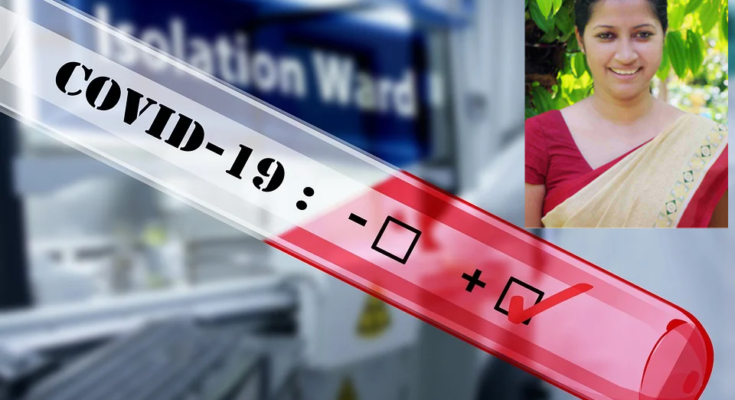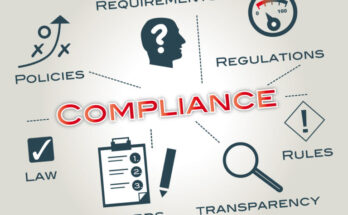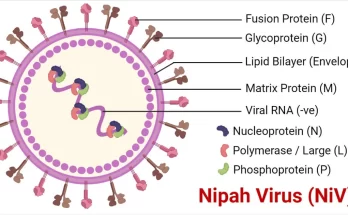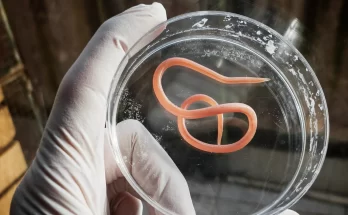
COVID-19 has upended the lives of billions of people across the globe up to date. As the virus surges in the past few months, scientists along with medical professionals are mobilizing in a united effort to confront and delay its spread. Although thousands of patients have already recovered from the coronavirus, the numbers of new records increase day by day, rapidly.
In the meantime, several trials for candidate vaccines and potential therapies are ongoing as research studies but currently there is no proven effective therapy or cure reported so far. In the absence such effective therapy, diagnostic testing has become a valuable tool in tackling the pandemic. It can be considered as one of the most important tools in fighting to reduce the spread and impact of the virus as it allows to identify infected individuals, thus, guide them with medical treatment. Testing enables the isolation of those who are infected and the tracing and quarantining of their contacts which critical for getting public safety measures on correct tack.
So, what tests can be used by health officials, how reliable they are and what pros and cons do they possess? All of that are being addressed in this article.

This article is based on an interview with Dr. Chamindri Witharana who is a senior lecturer of Department of Biochemistry & Molecular Biology, Faculty of Medicine, University of Colombo, Sri Lanka. She has undergone specialized training on molecular techniques including RT-PCR in centers of excellence such as Harvard University USA, University of Moscow Russia, Max Planck institute Germany.
Let’s start the discussion from the very basics. What are the main methods of COVID – 19 testing?
Mainly the testing is RT-PCR and serology.
RT-PCR stands for Reverse Transcription Polymerase Chain Reaction. This technique can detect genetic material of RNA virus such as SARS-CoV-2.
Second method is by detection of antibodies. We call it serology. This method can be used both for diagnosis and population surveillance. Antibody tests show how many people have had the disease, including those whose symptoms were minor or who were asymptomatic.
Can you further elaborate on RT-PCR?

Yes. Real time PCR is reverse transcriptase PCR. Transcription simply means the process of constructing a messenger RNA molecule, using a DNA molecule as a template. In this technique it is called a reverse transcription because the transcription process is reverse. Here, the RNA acts as the template. Let me elaborate it further.
In the first step the RNA is reverse transcribed into DNA. We call this the complementary DNA or the cDNA. An enzyme called Reverse transcriptase is used for the process. After the cDNA is made and it is amplified by many thermal cycles using PCR method. A minimal amount of intact RNA is sufficient for detection by the RT PCR due to the multiplication within the process.
How is the COVID-19 Virus detected using Real Time RT-PCR?
Using RT-PCR, the testing can be done on respiratory samples obtained by various methods, including nasopharyngeal swab or sputum sample. Results of the test can generally obtain within few hours. First the SARS-CoV-2 virus RNA is extracted from the sample, and that RNA is subjected to a RT PCR. Here the primer sets are designed for specific detection of SARS-CoV-2.
What samples can be taken for RT-PCR?
Generally, nasopharyngeal or oropharyngeal swabs, sputum, lower respiratory tract aspirates, bronchoalveolar lavage and nasopharyngeal wash/aspirates or nasal aspirates can be used for testing.
What is Serology?
This is a test which measures the antibody responses to viruses in our blood serum.

positive and negative results (Iamge – Wikimedia)
As you are aware, production of antibodies is a part of our immune system in response to an infection. These antibodies include IgM and IgG. IgM antibodies to SARS-CoV-2 are generally detectable in blood several days after initial infection. But IgG antibodies to SARS-CoV-2 become detectable later following infection. Thus, antibody tests can be used to determine the percentage of the population that has contracted the disease and that is therefore immune.
What are the pros and cons of RT-PCR over serology testing?
By now you must have understood that RT-PCR is a very specific and sensitive technique in detecting SARS-CoV-2. However, once the virus load has gone down following recovery this test can no longer tell if you’ve been infected or not. This creates a significant uncertainty of detecting the virus especially if someone has self-isolated due to mild and unclear symptoms.
Also, RT-PCR tests are done in a laboratory, so it takes time. Although the real test itself only takes several hours, when you add the collection of samples, transport and processing, the time till the results is known can be lengthen.
When it comes to antibodies, it typically takes a few days to weeks to develop in our body against a new infection. They last much longer in the bloodstream than the virus itself, providing a historical picture of past infections.
Although we highlight various methods for detection, there is a growing concern regarding false negatives from these tests.
- What is meant by false negative?
In any test there is a probability of resulting false negatives. That means the patient is positive for the virus but the test results are indicated as negative.
- What could result false negative in test outcomes?
There are several things that can impact on this. Usually, the false negative percentage depends on the test that is used. If we consider the COVID-19 scenario, if the concentration of the testing material is less; for example, the amount of RNA for RT-PCR or the concentration of the antibodies for serology testing, then it might lead to a false negative.
Apart from that, the RNA used for RT-PCR testing can get easily degraded. When it comes to serology testing the long duration to develop antibodies can lead to false negative results. In a current publication by To and colleagues (2020) in Lancet Infectious Diseases, IgM and IgG were shown to become detectable in 10 days after onset of symptoms.
There are many other test suggestions coming up with the spread of this pandemic and rapid resting has become a buzz word among people with regarding COVID-19 testing. How does “Rapid test” methodology come in to play?
Well, Rapid diagnostic tests (RDTs) are small stand-alone tests which are simple to use. They can be used at the point of care which means outside of a hospital with minimally trained staff. They provide test results within a short period of time and particularly useful for low resource settings where lab tests are less obvious.
It is a qualitative lateral flow immunochromatographic assay for the detection of IgM and IgG antibodies to SARS-CoV-2 in human whole blood, serum or plasma samples.
Let me explain on this. In the Rapid Test Kit, the test cassette contains recombinant SARS-CoV-2 antigen conjugated to coloured particles. When a sample is added to the sample well of the cassette, the IgM or IgG present in the sample will bind to the antigen conjugate, forming coloured coronavirus antigen-antibody complexes. This mixture migrates laterally along the membrane to the test region. In this test region, anti-human IgM and anti-human IgG immobilize onto the membrane. These capture any IgM and IgG complexes that have formed, resulting in the appearance of coloured lines.
Even through rapid testing is portable and fast, accuracy will be lesser than the RT-PCR laboratory testing. Nevertheless, we can use it for remote areas where there is no laboratory with RT PCR facility. Furthermore, these IgG/IgM rapid antibody tests could be helpful in the diagnosis in cases who are highly suspected of having the infection and the same time the PCR test is negative. Furthermore, this test can recognize past infection and immunity.
Even though, RT-PCR is the ideal diagnostic test, RDT will also have certain advantages as the pandemic progresses.
*****
This article provides a clear picture on how powerful testing can be as a diagnostic tool and that testing has to do much more than simply diagnose and treat COVID cases. If we can reach that level, then the goal is not only to “flatten the curve” but also “crush the curve” in Sri Lankan boundaries and bring back the healthy and livable atmosphere so that we can restart our normal life.
In the midst of a pandemic like COVID-19 knowledge shared by recognized experts such as microbiologists, epidemiologists, immunologists, mathematicians, clinicians policy experts and molecular biologist are vital to make a steady move in combating the virus. Therefore, The Sri Lankan Scientist team is indeed thankful to Dr. Chamindri Witharana for sharing her insights with us.





I’m so grateful for sharing this so valuable diagnostic informations regarding covid 19.
All the facts were well explained.
Thanks again.
Excellent Presentation